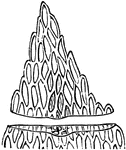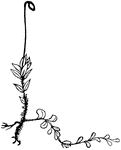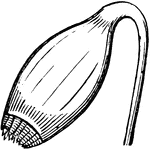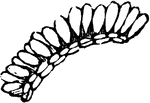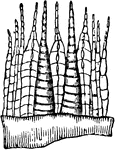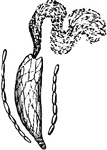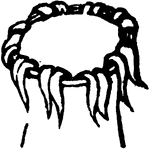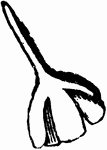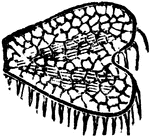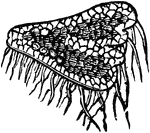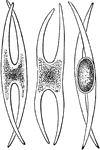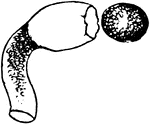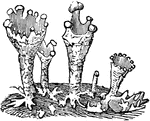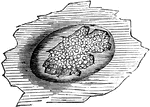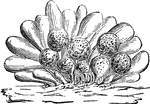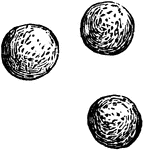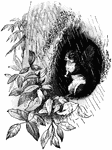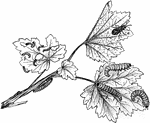
Mnium
Mnium cuspidatum's spore-case, with top of stalk, focusing on the lid and outside of the peristome.

Mnium
Antheridia and a pistillidium of the Mnium cuspidatum, at the end of a stem of same plant, the leaves…
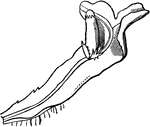
Liverworts
One of the frondose Liverworts, Steetzia, otherwise like a Jungermannia; the spore-case not yet protruded…

Riccia
Spore-case torn out, and spores; one figure of the spores united; the other of the four separated.
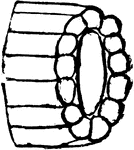
Chara
Outlines of a portion of the stem in section, showing the central cell and the outer or cortical cells.

Delesseria Lepreiurei
A piece of the rose-red Delesseria Lepreiurei, showing that it is composed of a layer of cells.
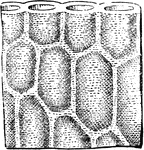
Delesseria Lepreiurei
A piece of the rose-red Delesseria Lepreiurei, showing the cells are gelatinous and thick-walled.
Desmid
Closterium acutum, a common Desmid. It is a single firm-walled cell, filled with green protoplasmic…

Vaucheria
A Vaucheria; single cell grown on into a much-branched thread; the end of some branches enlarging, and…
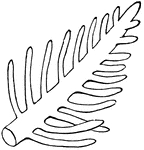
Bryopsis Plumosa
Bryopsis plumosa; apex of a stem with its branchlets; all the extension of one cell.

Lichens
A stone on which various Lichens are growing, such as (passing from left to right) a Parmelia, a Sticta,…

Sticta
Piece of thallus of a Sticta, with section, showing the immersed apothecia; the small openings of these…
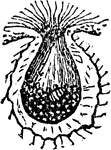
Fitch
A grape-vine leaf gall-louse. The insect forms galls on the under side of the grape-vine leaves, and…

Grape-Root Louse
Phylloxera Vastatrix, a grape-vine-root gall-louse, is by many entomologists supposed to be another…

Katydid
The Southern Katydid, Microcentrum laurifolium- 1, the female adult; 1a, eggs laid on leaves and twigs…
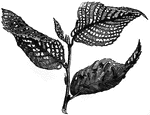
Beetle
Elm-leaf beetle, Galeruca xanthomelaena; a, egg patches on leaves; b, larva feeding; c, adult feeding.

Leaf-Cutter Bee
A leaf-cutter bee, Megachile species. Leaves cut from leaf-cutter bee in a burrow in a dead branch.
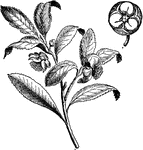
Tea
Camelia sinensis is the tea plant, the plant species whose leaves and leaf buds are used to produce…

Sorrel
"The common sorrel is a meadow plant, slender in habit, with halberd-shaped, juicy, acid flavored leaves,…

Spindle Tree
"The common spindle tree (Euonymus europaeus) is a European shrub, which bears glossy lanceolate…

Stackys sylvatica
"The European hedge woundwort, a tall hairy plant, with heart-shaped leaves, and numerous whorls of…
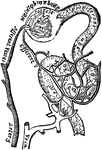
Plan of the Blood Vessels Connected with the Tubules
Plan of the blood vessels connected with the tubules. "The blood passes downwards in straight vessels…
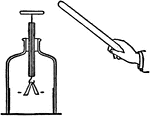
Electrostatic Induction
"Experiment to illustrate electrostatic induction. The leaves will diverge, ever though the charged…
